Dance and Aging
An Interview with Linda Ashley, Ph.D.
“Dance, dance, or we are lost!” Pina Bausch
In the highly competitive and youth-dominated world of professional dance, most performers retire in their thirties and early forties. For a dancer whose very identity is bound up in performance, what more does a life in dance have to offer?
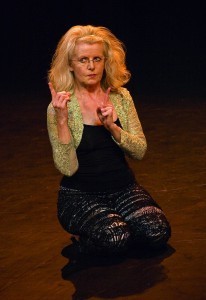 The following interview with dance educator, writer and choreographer, Linda Ashley, explores both the challenges and opportunities faced by the aging dancer. Welcome, Linda!
The following interview with dance educator, writer and choreographer, Linda Ashley, explores both the challenges and opportunities faced by the aging dancer. Welcome, Linda!
Why did you feel a need to coin the term “Youthanasia,” and what exactly do you mean by it?
I haven’t coined a dictionary definition for the term. However, if I were to do so, it would hover around something to do with the historical stereotyping of dance as a youth-driven art form combined with the more recent growing awareness of how dance can contribute to the quality of life for all ages.
At the time I began using the term Youthanasia, I was intrigued by two important factors. First, the students I was teaching on the Bachelor of Dance seemed to have little idea of what they would do in their careers as they aged and saw dance only through a performer’s eyes. Second, I was concerned about the rise of TV shows that seemed to focus on dance as a young people’s art form and little else.
Can a dancer avoid, fend off or battle Youthanasia? What approach to longterm career and life planning would you advise for young people who have a passion for performance?
I don’t think Youthanasia is avoidable per se. If I had to choose one piece of advice for young dancers, it is to take a 360-degree view of dance in the world that includes, but is not restricted by, performance.
For young people who are driven by the image of dance as performance, I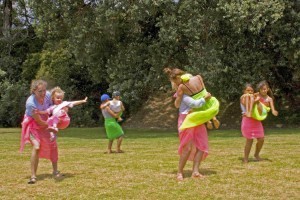 would suggest first-up doing a university dance degree, if they are inclined that way at all, because studying dance is what prepares and gives one diverse capabilities. Also, the study is the theory and the practice combined. I always tried to teach this way. My books are written from the same perspective, and it was how I was educated in dance.
would suggest first-up doing a university dance degree, if they are inclined that way at all, because studying dance is what prepares and gives one diverse capabilities. Also, the study is the theory and the practice combined. I always tried to teach this way. My books are written from the same perspective, and it was how I was educated in dance.
As a student comes to understand what a vital role dance can play in improving the quality of life for many, many different people, his or her career path can be clearer and elongated, so that one doesn’t necessarily have to give up dance later in life but can still earn a living from it. One may even still be able to perform like I, and many others, do at age sixty and beyond.
The enormous value of a dance education and/or training is that it is a massively disciplined and challenging way to live and learn. It is also one of the things that can prepare dancers to make their way in the world of work. Dancers can do anything!
Addressing the topic more personally and taking emotions into account, can you recall a moment or turning point in your own performance career when your aging body let you know its limitations? What did that feel like and how did you cope?
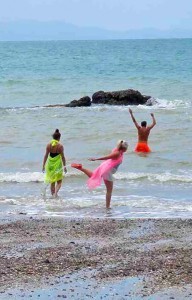 Perhaps an excerpt from my solo dance monologue might be helpful here. It captures a conversation that I have with my alter ego Dolly Mixture:
Perhaps an excerpt from my solo dance monologue might be helpful here. It captures a conversation that I have with my alter ego Dolly Mixture:
Dolly (rather pointedly): “You’ve peaked!”
Linda (in disarray and panic): “When did that happen?”
Dolly: “Just when you start to realize how to do it, your body packs up.”
Linda (in massive panic): “Why didn’t anyone tell me?”
Perhaps this captures how injuries become ongoing niggles and muscle power diminishes gradually, making how and what an older dancer can perform an ongoing negotiation with the body.
From time to time, one receives vivid reminders of how one’s performing capabilities have changed. Recently, for example, I performed with dancers who were half my age and really felt the differences between their dancing and mine. We bring different qualities to performances; I brought my wealth of administrative, choreographic and performing experience. It’s not all about performing! Above is a photo of one of my better moments (I’m in pink).
We have heard critics deride such dancers as Margot Fonteyn for retiring too late, or Darcy Bussell too soon. Is there ever a right time to retire?
Good question. I guess it depends on what kind of dance you are retiring from and to. Classical ballet is most challenging for older dancers in its physical demands. However, leading classical dancer Mikhail Baryshnikov made a shift to postmodern dance in 1989 and critics recognized it as a success. In 2001, critics acknowledged that his physical intelligence was still as mesmerizing as his youthful performances once were.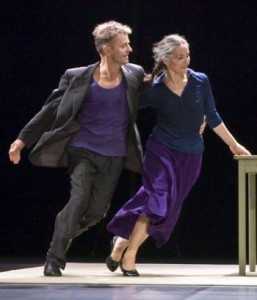
Personally, I even think that there may be room for ballet dancers to perform ballet but with a different emphasis in later life. In my book Essential Guide to Dance, I write “It is this deepest physical integrity of a dancer in performance which offers dance today a future of great promise and excitement.” I truly believe this, and the future for older dancers is only just beginning.
What is next for Linda Ashley? Is there life after Youthanasia?
What’s next is to keep up with some sort of active dancing and choreography. I still occasionally receive invitations to perform Youthanasia of Dance, and I like doing this, because people have fun and it provokes lots of interesting discussion. Also, I hope to work on some more beach dance projects for community and professional dancers to participate in.
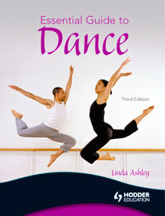 I am keeping up with my writing and conference presentations. Recently, I’ve been peer reviewing for a couple of academic journals, too. I have ideas for three more books that have been floating around in my mind for several years, and one of them is currently in the pipeline and nearly ready to go looking for a publisher.
I am keeping up with my writing and conference presentations. Recently, I’ve been peer reviewing for a couple of academic journals, too. I have ideas for three more books that have been floating around in my mind for several years, and one of them is currently in the pipeline and nearly ready to go looking for a publisher.
Oh, and I’m still gardening and working on being a connoisseur of the mundane. I can highly recommend that; it’s underrated.

“Dance, dance, or we are lost!” Pina Bausch
In the highly competitive and youth-dominated world of professional dance, most performers retire in their thirties and early forties. For a dancer whose very identity is bound up in performance, what more does a life in dance have to offer?
 The following interview with dance educator, writer and choreographer, Linda Ashley, explores both the challenges and opportunities faced by the aging dancer. Welcome, Linda!
The following interview with dance educator, writer and choreographer, Linda Ashley, explores both the challenges and opportunities faced by the aging dancer. Welcome, Linda!Why did you feel a need to coin the term “Youthanasia,” and what exactly do you mean by it?
I haven’t coined a dictionary definition for the term. However, if I were to do so, it would hover around something to do with the historical stereotyping of dance as a youth-driven art form combined with the more recent growing awareness of how dance can contribute to the quality of life for all ages.
At the time I began using the term Youthanasia, I was intrigued by two important factors. First, the students I was teaching on the Bachelor of Dance seemed to have little idea of what they would do in their careers as they aged and saw dance only through a performer’s eyes. Second, I was concerned about the rise of TV shows that seemed to focus on dance as a young people’s art form and little else.
Can a dancer avoid, fend off or battle Youthanasia? What approach to longterm career and life planning would you advise for young people who have a passion for performance?
I don’t think Youthanasia is avoidable per se. If I had to choose one piece of advice for young dancers, it is to take a 360-degree view of dance in the world that includes, but is not restricted by, performance.
For young people who are driven by the image of dance as performance, I
 would suggest first-up doing a university dance degree, if they are inclined that way at all, because studying dance is what prepares and gives one diverse capabilities. Also, the study is the theory and the practice combined. I always tried to teach this way. My books are written from the same perspective, and it was how I was educated in dance.
would suggest first-up doing a university dance degree, if they are inclined that way at all, because studying dance is what prepares and gives one diverse capabilities. Also, the study is the theory and the practice combined. I always tried to teach this way. My books are written from the same perspective, and it was how I was educated in dance.
As a student comes to understand what a vital role dance can play in improving the quality of life for many, many different people, his or her career path can be clearer and elongated, so that one doesn’t necessarily have to give up dance later in life but can still earn a living from it. One may even still be able to perform like I, and many others, do at age sixty and beyond.
The enormous value of a dance education and/or training is that it is a massively disciplined and challenging way to live and learn. It is also one of the things that can prepare dancers to make their way in the world of work. Dancers can do anything!
Addressing the topic more personally and taking emotions into account, can you recall a moment or turning point in your own performance career when your aging body let you know its limitations? What did that feel like and how did you cope?
 Perhaps an excerpt from my solo dance monologue might be helpful here. It captures a conversation that I have with my alter ego Dolly Mixture:
Perhaps an excerpt from my solo dance monologue might be helpful here. It captures a conversation that I have with my alter ego Dolly Mixture:Dolly (rather pointedly): “You’ve peaked!”
Linda (in disarray and panic): “When did that happen?”
Dolly: “Just when you start to realize how to do it, your body packs up.”
Linda (in massive panic): “Why didn’t anyone tell me?”
Perhaps this captures how injuries become ongoing niggles and muscle power diminishes gradually, making how and what an older dancer can perform an ongoing negotiation with the body.
From time to time, one receives vivid reminders of how one’s performing capabilities have changed. Recently, for example, I performed with dancers who were half my age and really felt the differences between their dancing and mine. We bring different qualities to performances; I brought my wealth of administrative, choreographic and performing experience. It’s not all about performing! Above is a photo of one of my better moments (I’m in pink).
We have heard critics deride such dancers as Margot Fonteyn for retiring too late, or Darcy Bussell too soon. Is there ever a right time to retire?
Good question. I guess it depends on what kind of dance you are retiring from and to. Classical ballet is most challenging for older dancers in its physical demands. However, leading classical dancer Mikhail Baryshnikov made a shift to postmodern dance in 1989 and critics recognized it as a success. In 2001, critics acknowledged that his physical intelligence was still as mesmerizing as his youthful performances once were.

Personally, I even think that there may be room for ballet dancers to perform ballet but with a different emphasis in later life. In my book Essential Guide to Dance, I write “It is this deepest physical integrity of a dancer in performance which offers dance today a future of great promise and excitement.” I truly believe this, and the future for older dancers is only just beginning.
What is next for Linda Ashley? Is there life after Youthanasia?
What’s next is to keep up with some sort of active dancing and choreography. I still occasionally receive invitations to perform Youthanasia of Dance, and I like doing this, because people have fun and it provokes lots of interesting discussion. Also, I hope to work on some more beach dance projects for community and professional dancers to participate in.
 I am keeping up with my writing and conference presentations. Recently, I’ve been peer reviewing for a couple of academic journals, too. I have ideas for three more books that have been floating around in my mind for several years, and one of them is currently in the pipeline and nearly ready to go looking for a publisher.
I am keeping up with my writing and conference presentations. Recently, I’ve been peer reviewing for a couple of academic journals, too. I have ideas for three more books that have been floating around in my mind for several years, and one of them is currently in the pipeline and nearly ready to go looking for a publisher.Oh, and I’m still gardening and working on being a connoisseur of the mundane. I can highly recommend that; it’s underrated.
A Meditation on Dancing and Aging by Martin Keogh

Published on April 21, 2013 09:49
No comments have been added yet.
Germaine Shames' Blog
Reaching out to Readers of literary and crossover fiction
- Germaine Shames's profile
- 10 followers



